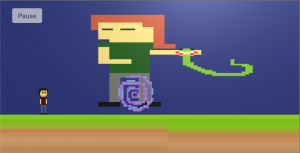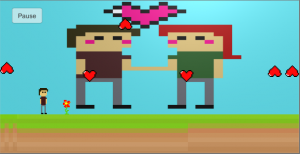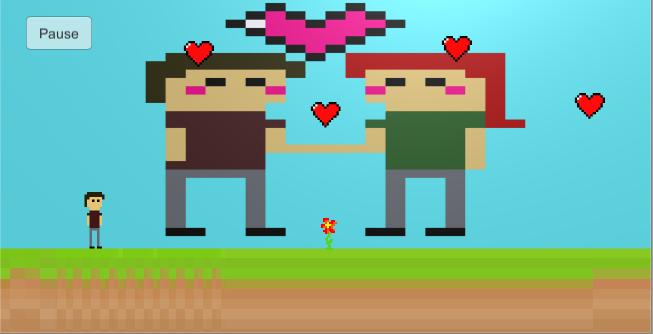I ended up spending a lot more time on coding than I initially realized it would take. Oddly enough it was in things I assumed would be seemingly simple that ended up taking the most time whereas many of the codes I thought would be quite challenging ended up being quite a breeze. For instance, creating consistent backgrounds that changed for each scene and that travelled with the player seemed like it would take forever to get working but ultimately it was just a matter of creating an object that traveled with the camera and laying an image texture over it.


(examples of different backgrounds that travel with the player.)
Meanwhile, things that seemed as though they would be basic, such as changing the code from an endless runner format to one where the player simply moves with the push of a button took an incredibly long amount of time. Ultimately what gave me the most trouble was making obstacles that moved back and forth on a set track. I had some semblance of an idea that this would be a difficult task but I did not realize it would take me literal weeks to get working. Ultimately I was able to write a code that not only moved it the obstacles but changed direction when the obstacle’s edge hit one of two catchers. From there I had to make sure that the obstacles changed direction to ensure that the side with the trigger always hit the catcher it was moving towards and thus prevent it from getting stuck. Additionally, getting the flower to work has taken quite some time, though some factors have gone more quickly than others. For instance, getting the flower to trigger a sound effect, destroy the obstacles, and stop the music did not take much work, however, getting the flower to vanish after being picked up has proven quite difficult. I am also still working on getting the flower counter to trigger one of two multiple endings which will hopefully be done in the next couple of days.

( heart obstacles plus flower)
Ultimately I had a lot of fun taking my basic idea and messing around with problem and solution boxes of the game as discussed in class during our discussion of Avant-garde Videogames: Playing with Technoculture by Schrank, Brian, and J. David Bolter. I had my initial idea of a game dealing with loss and memory but it wasn’t quite “radical.” However, after the discussion of the text, I came to the idea of messing around with traditional expectations of video games. Thus I changed my game to reflect this, placing tempting “power-ups” in the form of flowers that remove the obstacles but which ultimately trigger the bad ending (as signaled through musical and art shifts.) Ultimately the player must overcome their knee jerk desire to take the power-up they have been trained by other games to try to get. Instead they must take the game on at its most difficult in order to achieve the good ending. In this way, the player mirrors the journey of the protagonist and his resistance (or succumbing to) the desire to simply block out his memories rather than face them.
Ultimately working on this game has been a major learning experience. I have learned not only how to mess around with traditional gaming formats to create something deeper, but I have also been exposed to many new programs that were entirely new to me yet which are incredibly valuable tools. Programs such as Unity, GarageBand, and Piskel all took quite a long time to get used to and learn how to use, but once I got the hang of them it felt like some real tools were added to my arsenal. All in all this has been a major learning experience, that, though incredibly time consuming and often very frustrating, has taught me much and left me with many useful skills.

(Sample of GarageBand, one of the many new tools I learned to use during this project)
